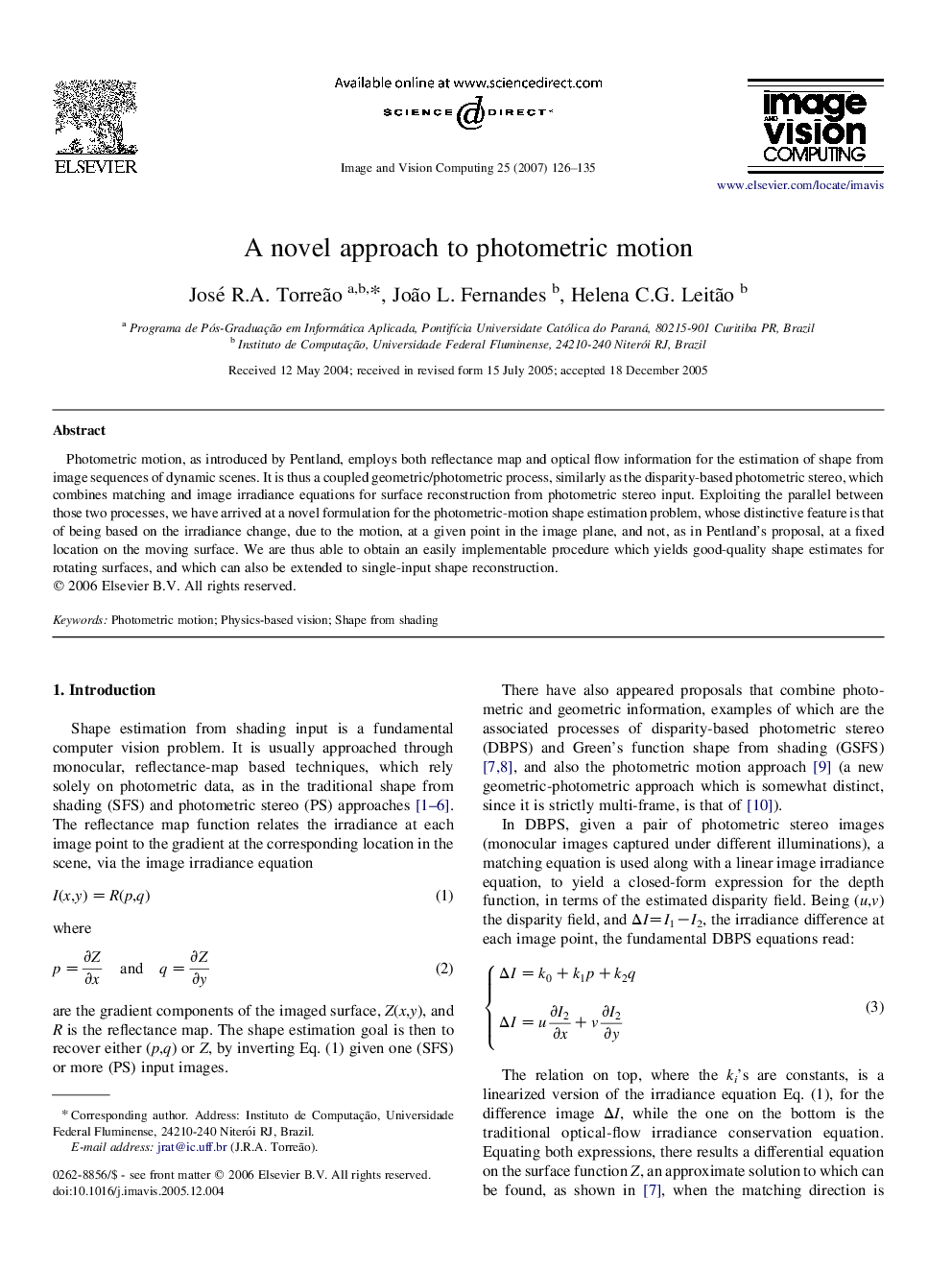| Article ID | Journal | Published Year | Pages | File Type |
|---|---|---|---|---|
| 529560 | Image and Vision Computing | 2007 | 10 Pages |
Photometric motion, as introduced by Pentland, employs both reflectance map and optical flow information for the estimation of shape from image sequences of dynamic scenes. It is thus a coupled geometric/photometric process, similarly as the disparity-based photometric stereo, which combines matching and image irradiance equations for surface reconstruction from photometric stereo input. Exploiting the parallel between those two processes, we have arrived at a novel formulation for the photometric-motion shape estimation problem, whose distinctive feature is that of being based on the irradiance change, due to the motion, at a given point in the image plane, and not, as in Pentland's proposal, at a fixed location on the moving surface. We are thus able to obtain an easily implementable procedure which yields good-quality shape estimates for rotating surfaces, and which can also be extended to single-input shape reconstruction.
